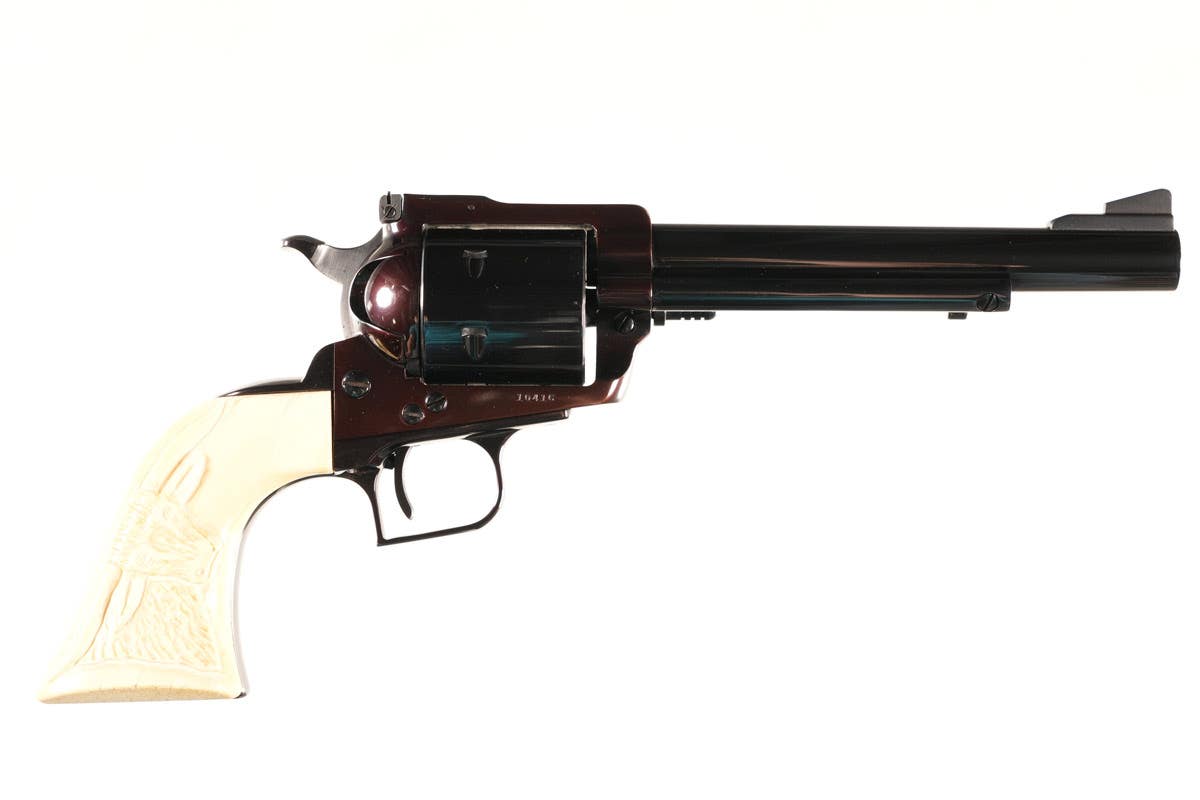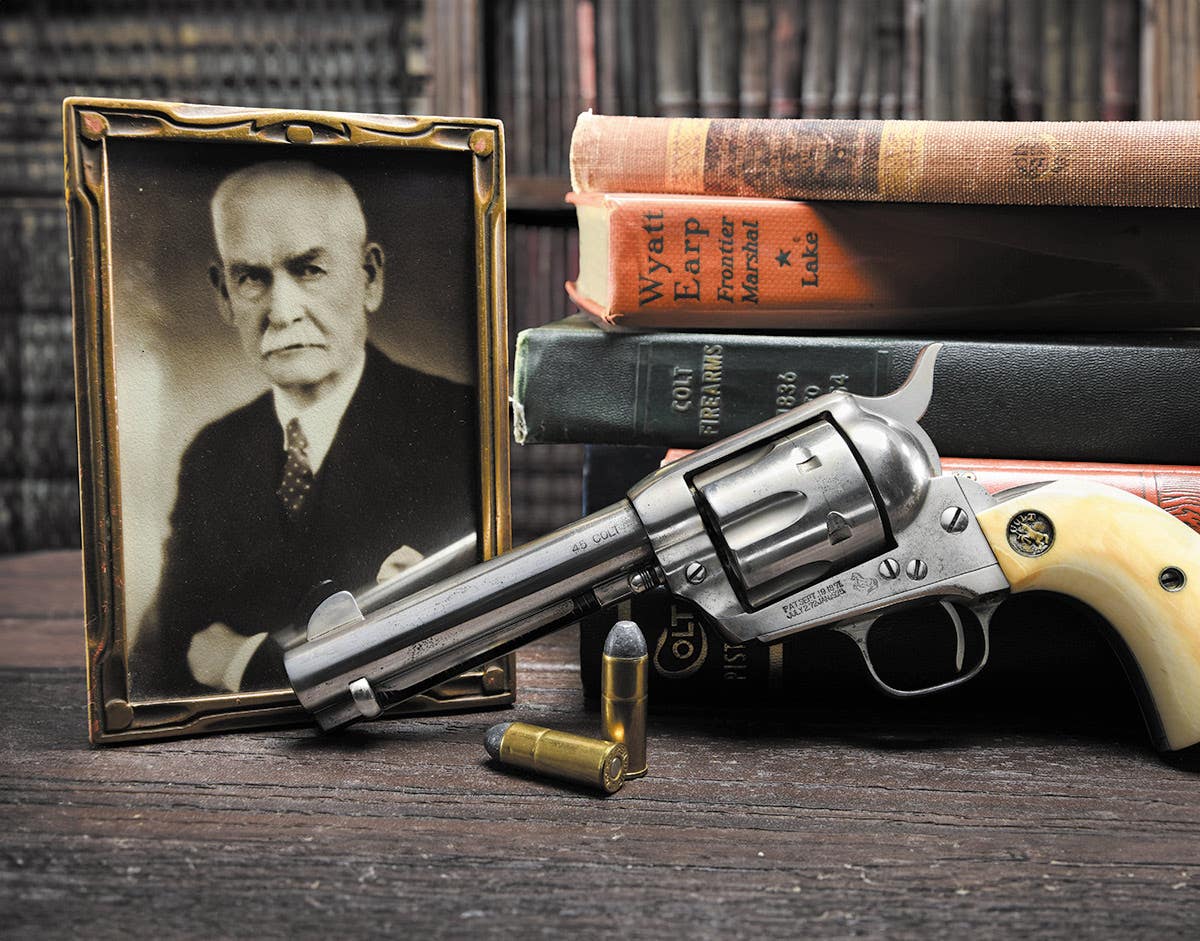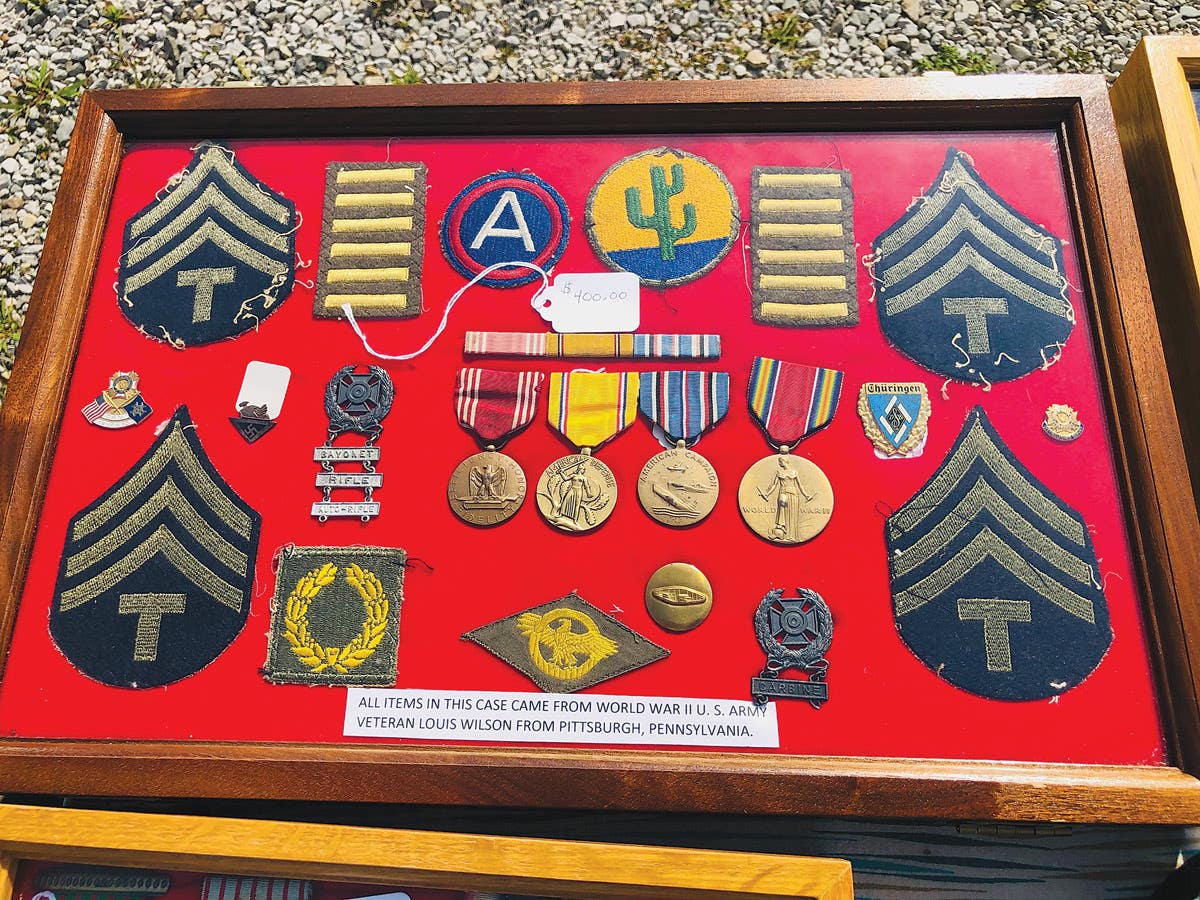Return to Thunder: The Sad Tale of a B-17 POW and His Dog
Stray dog waits faithfully for master’s return
May 21, 2010
by Art Beltrone
Lt. Robert Payne with Thunderbolt holding an unexploded German
round that passed into the Gremlin Buggy’s cockpit but did not explode.
He is comparing the round with Thunder’s nose.
In June 1943, B-17 pilot Lt. Robert Payne from Holyoke, Massachusetts, arrived at Great Ashfield air base in the English countryside and joined the 548th Squadron of the 385th Bomb Group. He soon befriended a stray dog outside a nearby pub, and the two became inseparable. When Payne and his crew were driven to their “Gremlin Buggy” aircraft, the dog, named “Thunderbolt” by Payne after the P-47 fighter escorts, followed to watch the aircraft fly away. When Thunderbolt heard the returning aircraft hours later, he hurried to the flight line to await his master’s return.
In November 1943, Thunderbolt watched Payne and his crew fly off on their 20th mission—a raid on Bremen, Germany. Near the target the aircraft was shot down and Payne and the other surviving crew members were captured and taken to Dulag Luft, the German interrogation center. Next stop was the Stalag Luft I prison camp.
Meanwhile, at Great Ashfield during the day of the fateful mission, Thunderbolt returned to the Gremlin Buggy’s parking spot after hearing the first sounds of returning aircraft. He patiently waited while each plane landed and remained at the Gremlin Buggy hardstand, through the night and into the next day. He would not leave the spot without his master.
STORY TOLD THROUGH COLLECTION
This heart-warming story is told through a large and historic collection of over 100 World War II prisoner of war artifacts saved by pilot Bob Payne during the war and after his liberation from Stalag Luft I. The material, acquired recently by Beltrone & Company of Keswick, Va., reinforces the need for collection integrity and provenance, and how a combination of three-dimensional objects, manuscript material, photographs and research can preserve and present military history for public exhibit. It is the story behind the objects that interest the public and provide a better and more enjoyable understanding of the past.
Photo from Lt. Robert Payne’s log book showing his pal Bob Lipsett
with Thunderbolt at the Great Ashfield air base.
Lieutenant Payne’s original “Wartime Log” book is in the collection. Obtained by him from a YMCA representative in Stalag Luft I, the book was used by the pilot to store personal mementos, artwork and the names and addresses of camp comrades. The scarce book contains several pages of photographs sent from home and taken in Stalag Luft I, many bearing the censor stamp of a German camp official.
One of the photos shows an officer holding a mixed-breed dog. Long and lanky, the animal resembles a greyhound. Under the photo is a caption—“Thunderbolt and Bob Lipsett.” It provided one clue that lead to the unraveling of the remarkable story about a man and a dog.
Other aspects of the prisoner of war experience are represented in the Payne material, from boredom to creativity, humor to survival. The spirit on the home front is depicted through letters from home and POW informational material prepared and distributed by the United States War Department.
Camp life is seen in Payne’s camp letters sent home, as well as the items he personally used in camp. There are his Argentine-made canvas camp shoes, packs of German and French cigarettes and hand-crafted tin cigarette pack box fashioned from narrow strips of Red Cross food cans. Other items that add to the story include German soap, matches, a hand-made duffel bag, unopened box of Canadian cheese and an RAF insignia partially finished needlework kit, still with needle and wool thread.
Personal letters and other printed material show how Payne’s wife and family members purchased and shipped goods into the camp for his use, especially cigarettes and tobacco, which became a form of camp currency.
A STORY WITH RESONANCE
The pilot’s saga with Thunderbolt had such national appeal the story was featured in the April 1946, Picture News comic book edition, that Lieutenant Payne also saved. In January 1944, a story about Payne and Thunderbolt appeared in the London edition of Stars and Stripes under the headline “Thunderbolt Misses His Master’s Voice.” A photo of the dog accompanied the story. The story was written by Earl Mazo, an associate of Stars and Stripes writer Andy Rooney. Mazo used a pseudonym as the byline.
Mazo explained that Payne’s base comrade, Lt. Bob Lipsett, finally coaxed Thunderbolt away from his post and with his missing friend gone, began caring for the faithful dog. It took months before Payne’s family and the men at the Great Ashfield base learned that the downed pilot had survived and was imprisoned.
In correspondence between Payne and his wife, the pilot continuously expressed his concern for his dog. Lt. Lipsett sent information about the dog to Payne’s wife, who in turn included the news in letters to her POW husband. Men stationed at air bases were not permitted to write directly to POW friends in prison camps.
Soon after the D-Day invasion, Lt. Lipsett was ordered to France and he decided to take Thunderbolt with him, hoping to reunite the dog and his master when Lt. Payne was released from captivity. During the ensuing months, the dog had a number of thrilling experiences, including being wounded in action and saved by a surgeon at a field medical station. All of this is recounted in a postwar 385th Bomb Group magazine story.
“‘Thunder’ is here in France with me and doing O.K. now,” Lipsett wrote in a V-Mail letter to Mrs. Payne on August 12, 1944. “He has had a tough time of it. The shell fire & bombs upset him at first but now he is back to normal.” In the same letter the officer asked Mrs. Payne to tell her husband more about the dog.
“Tell him ‘Thunder’ came near joining him,” Lt. Lipsett continued. “We were in a jeep and got back just by good luck & some good driving by the segt who was driving did we get back where we belonged.”
In May, 1945, Lt. Payne was liberated by Russian troops from Stalag Luft I and before he could be reunited with Thunderbolt, was returned to the United States through Camp Lucky Strike. Afterwards, Lt. Lipsett, still caring for Thunderbolt, found himself still in Europe. He received orders to return home but red tape prevented him from bringing Thunder with him. He feared he might have to abandon the dog in Europe.
Relaxing in a Red Cross canteen before leaving, by chance Lipsett struck-up a conversation with Red Cross Field Director Dr. James Eagan and told him the story of Bobby Payne and the odyssey of his dog Thunderbolt. Because of his position, Eagan, also about to return to the United States, volunteered to personally escort the dog during his voyage home on the Queen Mary and on November 27, 1945, the ship arrived at a New York City pier. Down the gangway came Eagan. Waiting on the pier with a group of reporters and photographers was Payne’s wife. Thunderbolt was handed-over as the flash bulbs popped.
The November 28, 1945, New York Herald Tribune carried a story headlined “Bomber Pilot’s Dog Arrives on The Queen Mary. Mascot at Flying Field in England Will Rejoin Master After Two Years.” The reporter wrote, in the lead paragraph, “Thunderbolt, a mournful-eyed three-year-old brindled mongrel, whose devotion to his pilot master became a United States Army Air Forces legend in England, arrived aboard the Queen Mary yesterday. The dog is on a 4,500-mile journey to rejoin his owner, who was liberated last May from a German prisoner-of-war camp and is now stationed at Hendricks Army Airfield in Sebring, Fla.”
The pilot and his remarkable wartime dog were reunited.
Resources for WWII history:
U.S. Air Force Survival Handbook
The Everything World War II Book
Warman's World War II Collectibles







